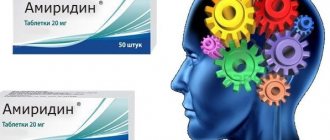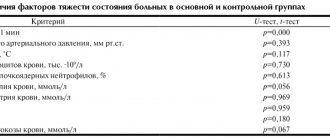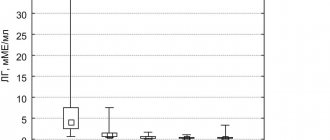Home | About us | Delivery | Advertisers | Login | Registration
Delivery on Sundays and holidays does not work!
- Medicines
- dietary supplementsVitamins
- Categories from A to Z
- Brands from A to Z
- Products from A to Z
- Medical equipment
- beauty
- Child
- Care
- Honey products appointments
- Herbs and herbal teas
- Medical nutrition
- Journey
- Making medicinesStock
Pharmacy online is the best pharmacy in Almaty, delivering medicines to Almaty. An online pharmacy or online pharmacy provides the following types of services: delivery of medicines, medicines to your home. Online pharmacy Almaty or online pharmacy Almaty delivers medicines to your home, as well as home delivery of medicines in Almaty.
my basket
Apteka84.kz is an online pharmacy that offers its customers medicines, medicinal and decorative cosmetics, dietary supplements, vitamins, baby food, intimate products for adults, medical equipment and thousands of other medical and cosmetic products at low prices. All data presented on the Apteka84.kz website is for informational purposes only and is not a substitute for professional medical care. Apteka84.kz strongly recommends that you carefully read the instructions for use contained in each package of medicines and other products. If you currently have any symptoms of the disease, you should seek help from a doctor. You should always tell your doctor or pharmacist about all the medicines you take. If you feel you need further help, please consult your local pharmacist or contact our GP online or by telephone.
© 2022 Pharmacy 84.
Buy Furosemide solution intravenously and intramuscularly 1% 2ml No. 10 in pharmacies
Latin name Furosemide
Release form Solution for injection
Pack of 10 ampoules of 2 ml.
Pharmacological action Furosemide is a potent diuretic with a rapidly developing effect. It disrupts the reabsorption of sodium and chloride ions in the thick segment of the ascending loop of Henle. In addition, it increases the excretion of potassium, calcium, and magnesium ions.
Indications: edema syndrome of various origins, incl. for chronic heart failure stages IIB-III, liver cirrhosis (portal hypertension syndrome), nephrotic syndrome; - pulmonary edema; – post-traumatic cerebral edema; – some forms of hypertensive crisis; – eclampsia; – premenstrual tension syndrome; – program of forced diuresis for barbiturate poisoning.
Contraindications – renal failure with anuria; – hepatic coma and precoma; – disorders of water-salt metabolism: hypokalemia, hyponatremia, hypovolemia (including with hypotension) or dehydration; – I and II trimesters of pregnancy; – hypersensitivity to sulfonamides.
Use during pregnancy and breastfeeding Furosemide is contraindicated for use in the first and second trimesters of pregnancy. In the third trimester, its use is possible only under strict indications and for a short period. If it is necessary to use Furosemide during lactation, breastfeeding should be stopped due to the fact that furosemide is excreted in breast milk and suppresses lactation.
Special instructions The drug should be prescribed with caution in cases of severe cardiovascular insufficiency, long-term therapy with cardiac glycosides, as well as in elderly patients with severe atherosclerosis. Before starting treatment, serious disturbances in water and electrolyte balance should be compensated. Monitoring laboratory parameters During treatment, the level of electrolytes, carbonates, and urea should be regularly monitored (especially when using doses above 80 mg). Impact on the ability to drive vehicles and operate machinery The question of the possibility of engaging in potentially hazardous activities that require increased attention and speed of psychomotor reactions should be decided after assessing the patient’s individual reaction, due to a possible decrease in the ability to concentrate.
Composition 1 ml contains furosemide 10 mg
Method of administration and dosage Furosemide is prescribed intravenously and intramuscularly. For adults, the daily dose for parenteral administration is 40 - 60 - 120 mg (1 - 2 times a day). The maximum daily dose for adults is 240 mg. For children, the initial daily dose is 1 mg per kg of body weight, the maximum daily dose is 6 mg per kg of body weight.
Side effects From the water-electrolyte balance and acid-base balance: with long-term use or administration in high doses - hypovolemia, dehydration, hypokalemia, hyponatremia, hypochloremia, alkalosis; in some cases - hypocalcemia. From the cardiovascular system: arterial hypotension, heart rhythm disturbances. From the central nervous system: dizziness, muscle weakness, convulsions; in some cases, when using the drug in high doses in patients with severe impairment of renal excretory function - hearing impairment, vision impairment, paresthesia. From the digestive system: dry mouth; rarely - nausea, vomiting, diarrhea. Metabolism: transient hyperuricemia (with exacerbation of gout), increased levels of urea and creatinine; in some cases - hyperglycemia. Dermatological reactions: dermatitis. Other: in some cases - anaphylactic shock, changes in the peripheral blood picture.
Drug interactions When furosemide is used simultaneously with cardiac glycosides, the risk of developing glycoside intoxication increases, and when used in combination with corticosteroids, the risk of developing hypokalemia increases. With simultaneous use, Furosemide potentiates the effect of muscle relaxants. With the simultaneous use of Furosemide with aminoglycosides or cephalosporins and cisplatin, their concentration in the blood plasma may increase, which can lead to the development of nephro- and ototoxic effects. With simultaneous use, NSAIDs can reduce the diuretic effect of Furosemide. With the simultaneous use of Furosemide and antihypertensive drugs, the hypotensive effect is potentiated. When used simultaneously with Furosemide, the effect of hypoglycemic drugs and pressor amines may be weakened.
Overdose Symptoms: dehydration, decreased blood volume, arterial hypotension, water-electrolyte imbalance, hypokalemia and hypochloremic alkalosis caused by the diuretic effect. Treatment: carry out symptomatic therapy. There is no specific antidote.
Storage conditions The drug should be stored in a dry place, protected from light, at a temperature not exceeding 25°C.
Shelf life: 2 years.
Indications for use of Furosemide
Furosemide - what are these tablets for?
Tablets are prescribed for:
- edema, the causes of which are kidney pathologies (including nephrotic syndrome ), stage II-III CHF or liver cirrhosis ;
- manifested as pulmonary edema of acute heart failure ;
- hypertensive crisis (as monotherapy or in combination with other drugs);
- severe forms of arterial hypertension ;
- cerebral edema;
- hypercalcemia;
- eclampsia.
The drug is also used for forced diuresis in case of poisoning with chemicals that are excreted from the body unchanged by the kidneys.
With elevated blood pressure developing against the background of chronic renal failure, furosemide is prescribed if the patient is contraindicated in thiazide diuretics , and also if Clcr does not exceed 30 ml per minute).
Indications for use of Furosemide in ampoules
The annotation for Furosemide in ampoules contains the same indications for use as for the tablet form of the drug.
When administered parenterally, the drug acts faster than when taken orally. Therefore, doctors, when asked “What is the solution for?”, answer that IV administration of Furosemide allows you to quickly reduce pressure (arterial, pulmonary artery, left ventricle) and preload on the heart, which is extremely important in emergency conditions (for example , in hypertensive crisis ).
In the case when the drug is prescribed for nephrotic syndrome , treatment of the underlying disease should come first.
Contraindications for Furosemide
The drug is not prescribed for:
- intolerance to its components;
- ARF, which is accompanied by anuria (if the GFR value does not exceed 3-5 ml/min.);
- urethral stenosis;
- severe liver failure;
- hepatic coma;
- hyperglycemic coma;
- precomatose states;
- obstruction of the urinary tract with stones;
- decompensated stenosis of the mitral valve or aortic orifice;
- conditions in which blood pressure in the right atrium exceeds 10 mmHg. Art.;
- gout;
- hyperuricemia;
- myocardial infarction (in the acute stage);
- arterial hypertension;
- hypertrophic subaortic stenosis;
- systemic lupus erythematosus;
- disorders of water-salt metabolism (hypocalcemia, hypochloremia, hypomagnesemia, etc.);
- pancreatitis;
- digitalis intoxication (intoxication caused by taking cardiac glycosides).
Relative contraindications to the use of Furosemide:
- benign prostatic hyperplasia (BPH);
- diabetes;
- hypoproteinemia (taking the drug increases the risk of developing ototoxicity);
- obliterating cerebral atherosclerosis;
- hepatorenal syndrome;
- hypotension in patients at risk of ischemia (coronary, cerebral or other), which is associated with circulatory failure;
- hypoproteinemia against the background of nephrotic syndrome (possible increased undesirable side effects of Furosemide (especially ototoxicity) and a decrease in its effectiveness).
Patients at risk should be under constant medical supervision. Violation of the blood sugar balance, hypovolemia or dehydration are grounds for reviewing the treatment regimen and, if necessary, temporarily discontinuing the drug.
Diuretics promote the removal of sodium from the body, therefore, in order to avoid the development of hyponatremia, before starting therapy and subsequently throughout the course of using Furosemide, it is necessary to monitor the level of sodium in the patient’s blood (especially in patients with cachexia , cirrhosis , as well as in the elderly).
The use of loop diuretics may cause sudden hypokalemia . Risk groups include:
- aged people;
- patients who are undernourished and/or taking multiple medications at the same time;
- patients diagnosed with cirrhosis with ascites ;
- patients with heart failure .
Hypokalemia increases the cardiotoxicity of digitalis (Digitalis) preparations and the risk of cardiac arrhythmias . In long QT syndrome (congenital or drug-induced), hypokalemia contributes to bradycardia or potentially life-threatening torsade de pointes (TdP ).
In this regard, it is recommended to determine the level of potassium in the patient’s blood as often as possible. The first ionogram should be done within a week after the start of the course.
In diabetics, sugar levels must be systematically monitored throughout the course of treatment.
Additional Information
The drug is not a doping, but it is often used to remove prohibited substances from the body, and also as a means of losing weight in sports where the athlete’s weight is important. In this regard, Furosemide is equated to doping drugs and cannot be used in athletes.
Reviews of Furosemide
Furasemide is one of the most effective diuretics with fast and short action.
Reviews from doctors confirm the fact that the drug plays a key role in the treatment of edema syndrome in patients with heart failure , since loop diuretics most effectively block the reabsorption of Na+ ions in the ascending segment of the loop of Henle. At the same time, Furosemide retains its activity even in patients with chronic renal failure (including at the terminal stage of the disease).
However, the use of loop diuretics may cause irreversible damage to the renal tubules, especially when the drug is prescribed in high doses.
A parallel increase in the delivery of Na+ ions to the distal nephron, where loop diuretics , leads to sodium overload and structural damage to these parts of the nephron with the development of hyperplasia and hypertrophy .
In addition, after the end of the drug’s action, Na+ reabsorption increases significantly and, as a result, a “ricochet” effect develops, manifested by an increase in post-diuretic reabsorption.
Reviews left by patients allow us to conclude that the medicine helps well against edema and is indispensable for hypertensive patients. The disadvantages of the drug are usually side effects, contraindications and the fact that it is addictive.
Another category of reviews is reviews of Furosemide for weight loss. Despite the fact that the drug really allows you to quickly reduce weight by 3-5 kg, both doctors and those losing weight do not recommend using it for weight loss. This is due to the fact that the drug does not remove excess fat, but only removes water (and with it substances necessary for the body to function normally).
Thus, given that Furosemide is a very powerful drug, it can only be used taking into account contraindications, not exceeding the prescribed dose and only under the supervision of a doctor (especially during pregnancy). Also, you should not take it for other purposes (for example, for cystitis ).
When treating with diuretics, a very important question is what to take the drug with. It is optimal to supplement therapy by eating potassium-rich foods or taking potassium supplements.





